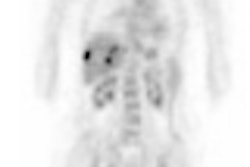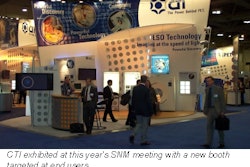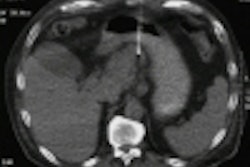
AuntMinnie.com is pleased to present Part I of our three-part series, Turf Wars in Radiology.
Elmhurst Hospital Center, a teaching hospital located in Queens, has the second busiest emergency department in New York City. Of the 121,000 exams the radiology department churns out each year, 45% are for emergency patients.
During the day, even when it’s busy, the radiology department absorbs most of this hefty workload. But at 2 a.m. things get a little tougher.
For starters, the ultrasound technologists aren’t there. They’re unionized, and they require three-quarters of their normal wage per hour to be on-call at night. When they actually come in, they require time and a half for a minimum of four hours.
The high cost has led Elmhurst Hospital radiologists to work out another solution: During normal hours, emergency patients that can be imaged with ultrasound are imaged with ultrasound. After hours, when a board-certified radiologist staffs the emergency department, many patients are imaged with CT.
"We realize this is not a perfect solution," said Dr. David Hayt, director of radiology at Elmhurst Hospital Center. "But we only have one radiologist present from 6 p.m. to 8 a.m., and he reads more than 100 plain-film exams and 25 CT exams a night. He can’t do that and scan patients with ultrasound."
This means that inevitably, emergency physicians perform and interpret ultrasound exams during the wee hours, Hayt said. How many, he doesn’t know. Ultrasound exams generated in the emergency department aren’t entered into the PACS, and no reports are created. He guesses the number isn’t too high, mostly because many emergency physicians know their limitations when it comes to ultrasound. But it’s enough that he is quick to label ultrasound a vexing problem. He wishes his department could cover it 24 hours a day, but for now it’s financially impossible.
Hayt's dilemma isn’t uncommon, and it isn’t limited to ultrasound. In the sometimes heated debate concerning who is best qualified to interpret emergency ultrasound and plain-film exams, the simple truth remains that radiologists have to be available if they’re to provide any input at all.
A quick look at the battle lines

As with any ongoing struggle, it’s difficult to determine who’s winning. In radiologists’ favor, the percentage of emergency chest x-rays interpreted by radiologists rose from 93% to 96.4% between 1993 and 1998, according to a report by AuntMinnie.com earlier this year.
And in a study that compared emergency physicians with radiologists when it comes to interpreting radiographs, Johns Hopkins University researchers determined that faculty-level radiologists were better than emergency physicians in interpreting emergency x-rays. The same holds true even for radiology residents, prompting the researchers to conclude that training level and specialty expertise is as important as image quality in assessing the value of a digital radiology system (American Journal of Roentgenology, November 2000, Vol.175:5, pp. 1233-1238).
Ultrasound is another story, however. A study published in the Annals of Emergency Medicine found that emergency physicians with relatively limited training could perform accurate aortic ultrasound scans. In fact, of the 68 ultrasound scans performed for suspected abdominal aortic aneurysms, emergency physicians posted a 100% accuracy rate (Annals of Emergency Medicine, September 2000, Vol. 36:3, pp. 219-223).
But these results don’t jibe with another study published last year in AJR that determined experience goes a long way in developing ultrasound proficiency. Specifically, the Duke University study concluded that first-year radiology residents who were involved in 200 ultrasound exams still performed poorly on competency tests. The study’s relevance to the turf battle is obvious, given that the American College of Emergency Physicians requires just 45 hours of instruction and 150 supervised exams for accreditation (American Journal of Roentgenology, May 2000, Vol. 174:5, pp. 1221-1227).
And even this training is more rigorous than many emergency medicine residents receive. Another study published in the Annals of Emergency Medicine determined that out of 119 emergency medicine residency programs surveyed in the U.S., only one program’s average graduate met the Society for Academic Emergency Medicine’s guidelines of 40 hours of instruction and 150 ultrasounds (Annals of Emergency Medicine, July 1999, Vol. 34:1, pp. 604-609).
The horror, the horror...losing it to cardiologists?

Further intensifying the turf war, the American Medical Association in 1999 refused to block the use of ultrasound by nonradiologists. And as for plain film, Medicare has for several years reimbursed the first person to read an exam, which in many cases is an emergency physician. Now, with multislice CT’s ability to image acute chest pain, yet another modality is likely to attract a turf fray.
"Before the CT scanner, you didn’t need a radiologist in the emergency room," said Dr. Salvatore J.A. Sclafani, who is professor of radiology, emergency medicine, and surgery at the State University of New York, as well as president of the American Society of Emergency Radiology (ASER). "Most people were comfortable reading chest x-rays, but it’s the newer imaging that’s making radiology so essential to patient care that 24-hour coverage will be an imperative," he said. "And if we’re not there, we’ll lose it to cardiologists."
Sclafani believes that radiologists should finesse their multislice CT scanners into offering on-demand cardiac care support. And on a broader note, he believes that with these newer scanning techniques, emergency radiology is fast becoming highly specialized and should morph into a subspecialty. Although there are only a few emergency radiology fellowships in the country, the ASER has developed an emergency imaging core curriculum that residency program directors can use to fashion emergency-specific education, Sclafani said.
The ‘virtual’ answer?

That’s the future. But how is radiology doing so far? Dr. Anthony J. Wilson, director of radiology at Seattle’s Harborview Medical Center and a longtime proponent that radiologists should interpret emergency exams, believes the battle is far from lost.
"Radiologists who want to remain in the business of emergency radiology have found ways of being available when needed," he said. "Although some have lost business because they haven’t provided the necessary service, my impression is that most large practices that have seen the threat coming have responded."
The key, Wilson believes, is to be where the action is, either virtually or in person. Emergency departments that only receive three or four calls per night can probably get by with a teleradiology service, he said. Busy departments, however, need a radiologist present 24 hours a day.
At Harborview -- the only level I trauma center for Alaska, Washington, Montana, and Idaho -- the choice is simple: round-the-clock staffing. They’re lucky. As a large teaching hospital, a steady pool of residents and fellows ensures that day or night, radiologists are always the first to read exams. Other hospitals have to be more creative.
Since 1994, as the first hint of a turf war loomed on the horizon, radiologists at Ohio State University Medical Center have worked night shifts to cover the emergency department. They’ve experimented with different methods. Residents often work two-week shifts of night duty, which requires a sleep adjustment that the chairman of the radiology department, Dr. Dimitrios Spigos, likens to flying to China. Attending physicians, on the other hand, work a floating night shift, in which they take the day off, work one night, take the next day off, and resume a normal work schedule the next day -- which Spigos describes as a night of insomnia.
About six months ago, Spigos instituted a third method. Because Ohio State's department is filmless, radiologists can read diagnostic-quality images at home via a secure server. They still subscribe to 24-hour staffing, but on especially slow nights the attending radiologist sometimes heads home, knowing troublesome scans are just a click away. But even with this flexibility, Spigos is reluctant to distance radiologists from the emergency department.
"I still prefer to be in the hospital when it’s busy, because personal contact has advantages," Spigos said. He’s not alone.
Dr. Stephen R. Baker, professor and chairman of radiology at New Jersey Medical School in Newark and editor in chief of the journal Emergency Radiology, thinks so too.
"Radiologists shouldn’t believe teleradiology is such a crutch that they don’t have to be there -- they’ll become disembodied functionaries instead of colleagues," Baker said. "You lose the consultation, which makes you more dispensable."
As Wilson puts it, even though studies have shown that radiologists outshine nonradiologists in reading scans, the point is moot unless radiologists read scans when the patient’s in the emergency department, not the next morning.
"Whether they have adequate training or not, it’s better to have a physician who knows something about imaging present when the decision has to be made than having no opinion at all," Baker said.
By Dan KrotzAuntMinnie.com contributing writer
August 10, 2001
Next installment: What does an interventional pulmonologist do that an interventional radiologist can’t?
Copyright © 2001 AuntMinnie.com



















